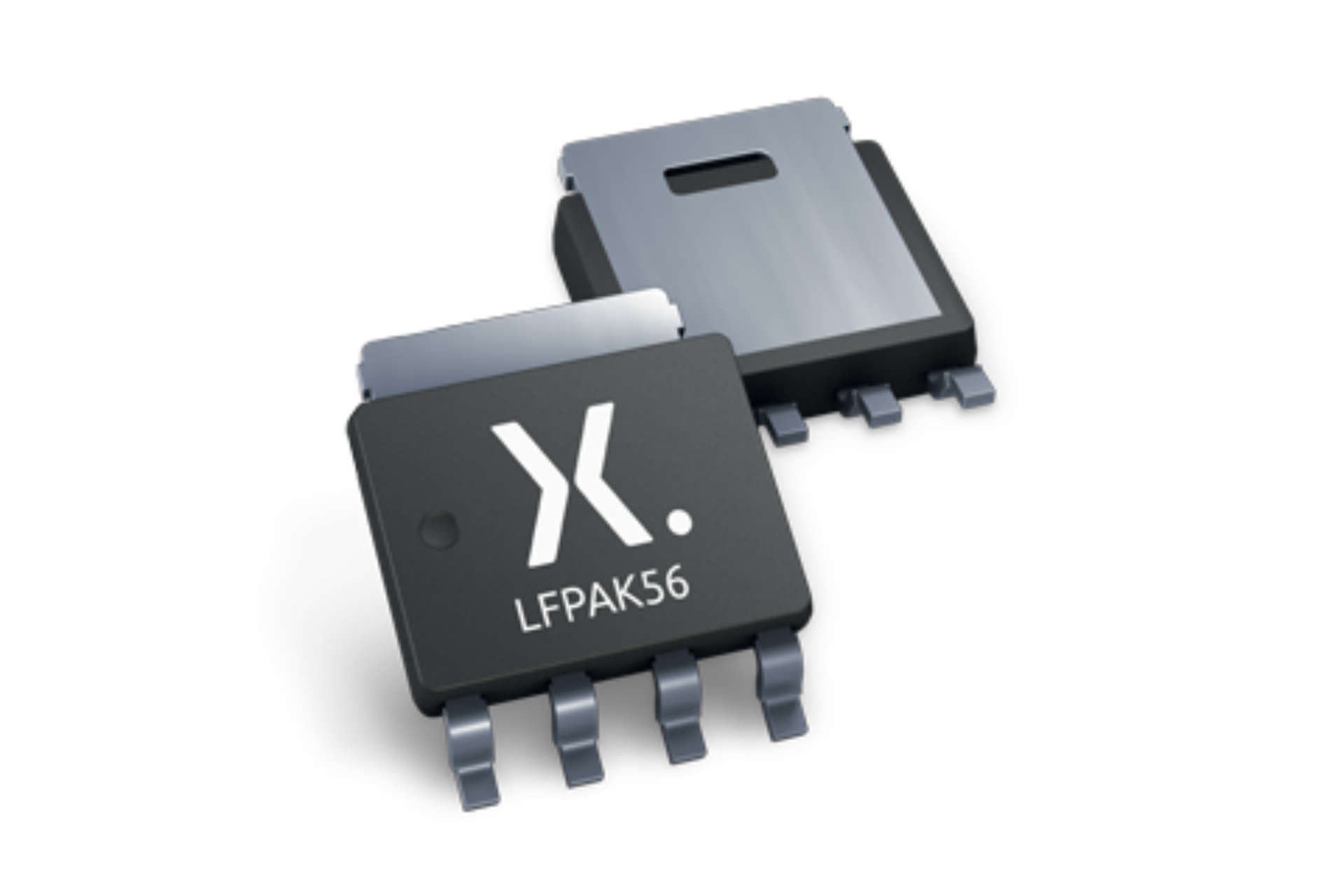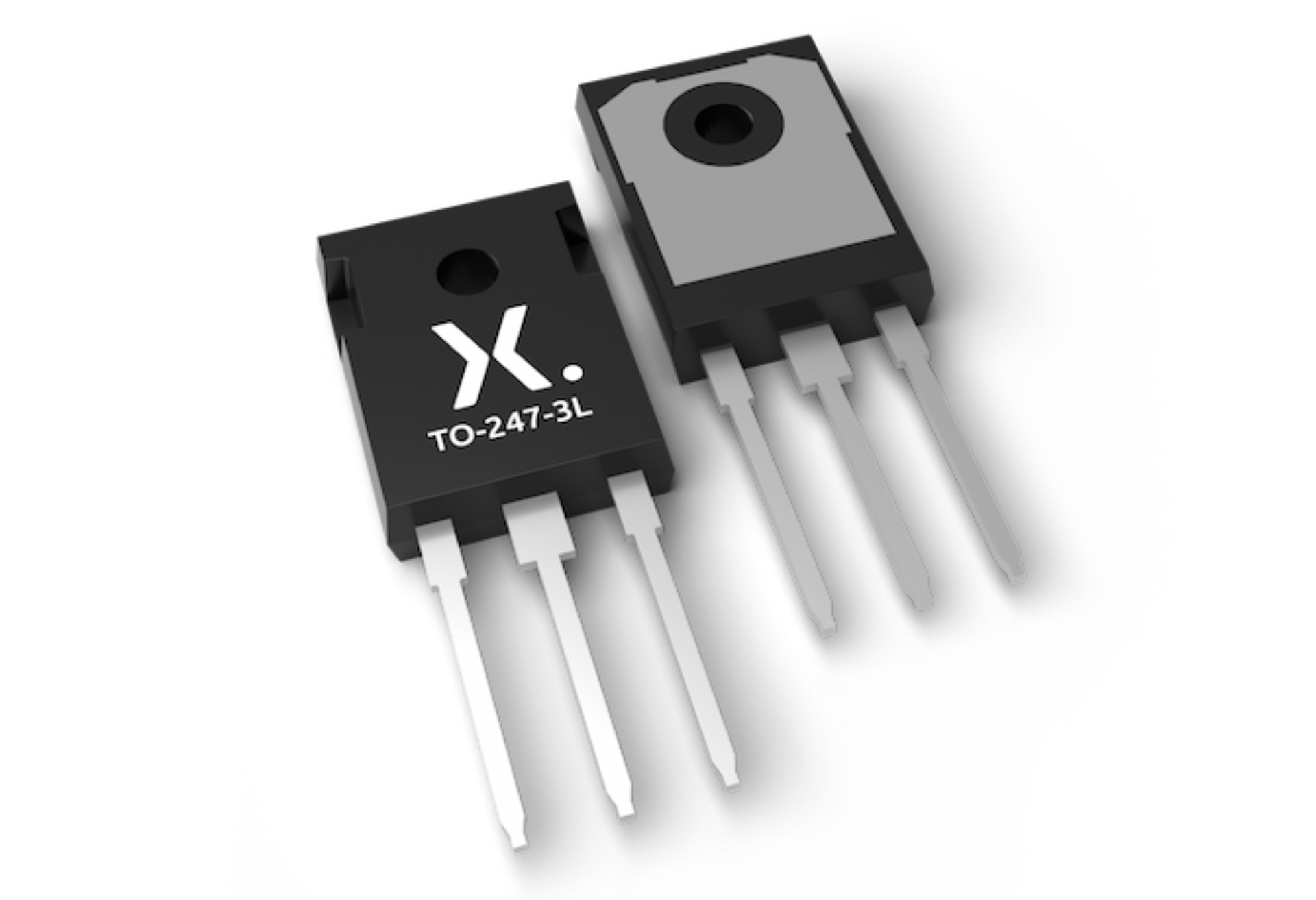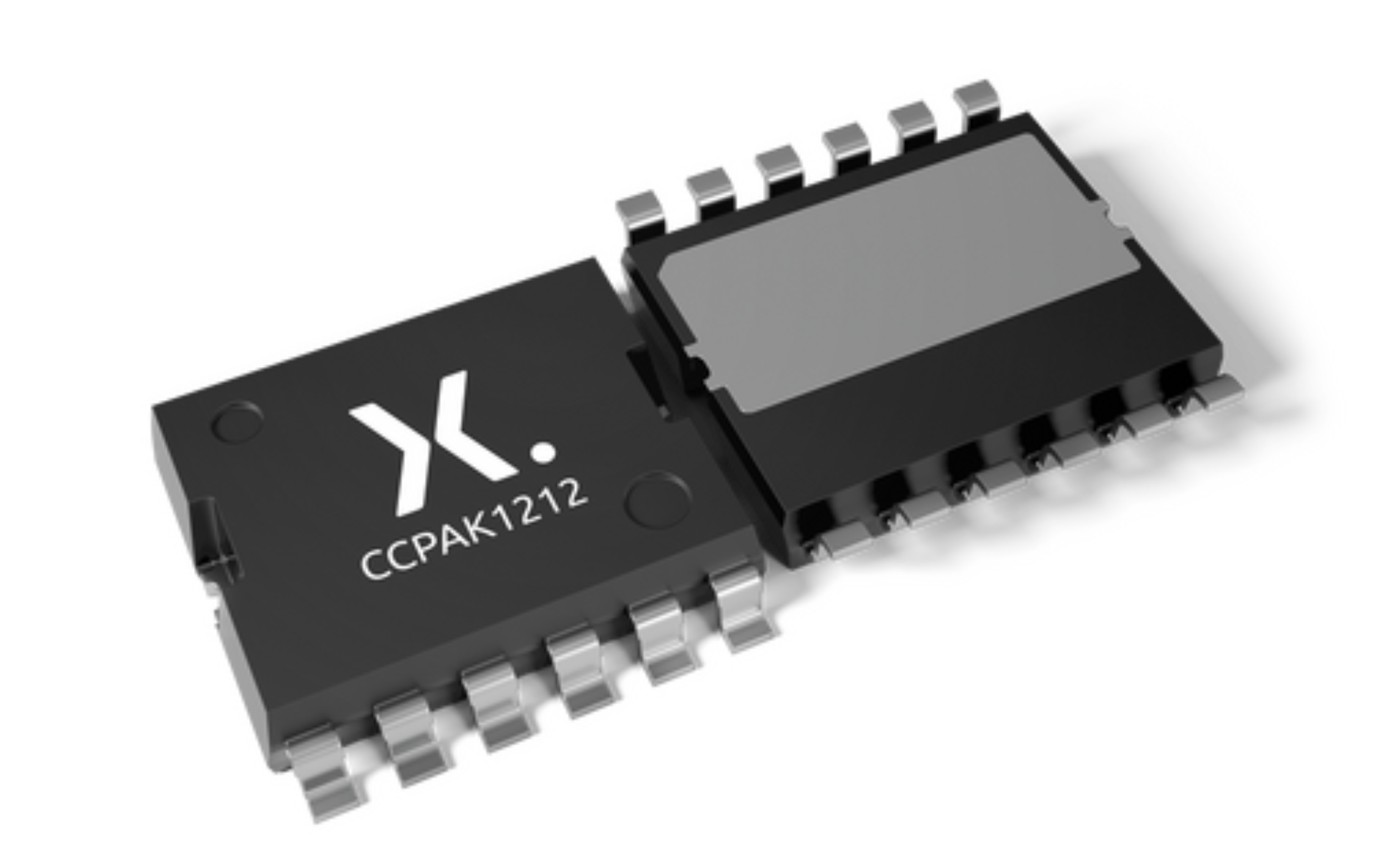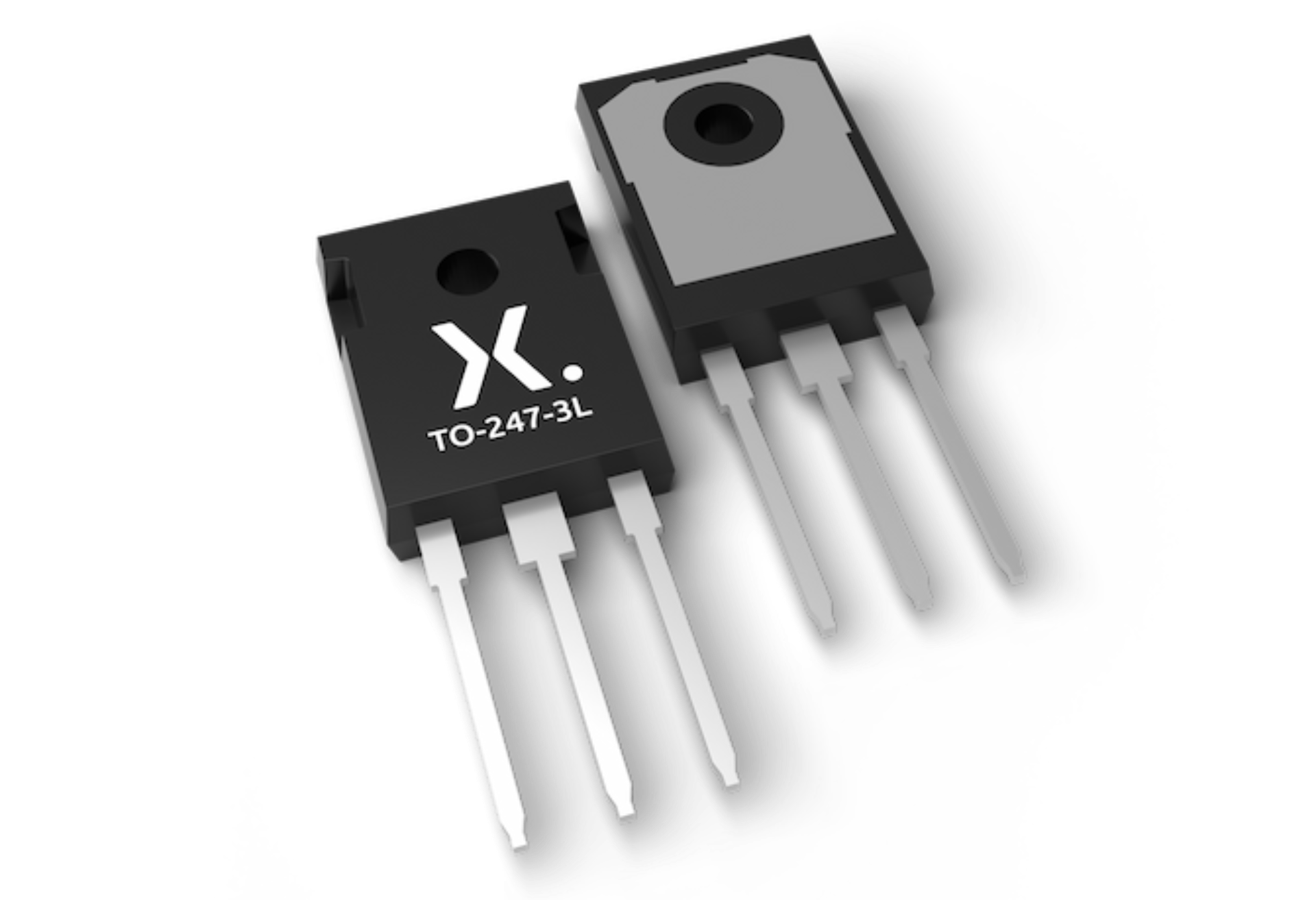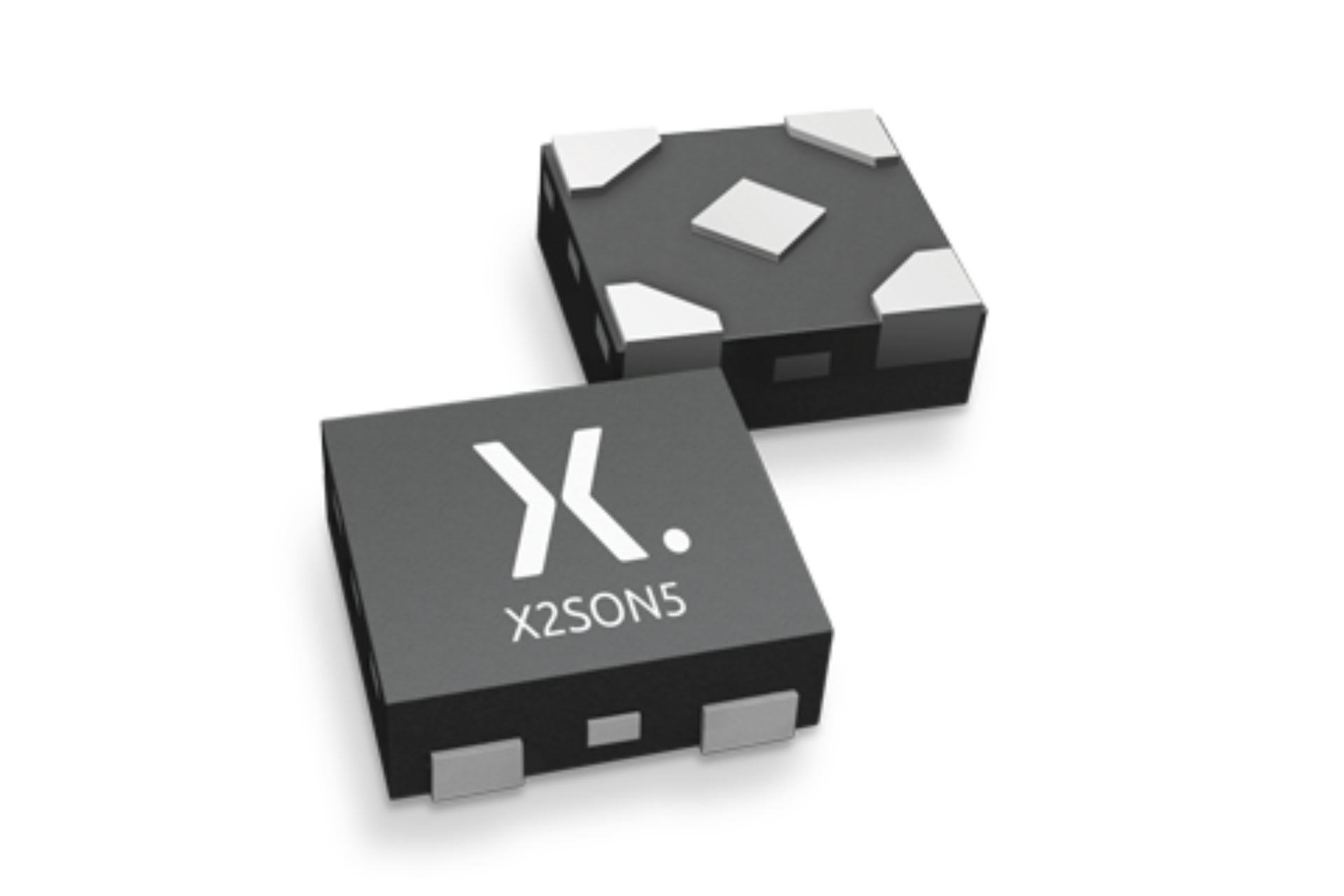Author: Nandor Bodo, Applications engineer, Manchester
This interactive application note contains embedded Cloud based simulations to augment the text.
To open the embedded simulation, simply hover over the simulation image. Left click anywhere in the graphic area once the central play button changes in colour. This opens the schematic in the Cloud environment. See the interactive application note tutorial page for more details on how to use the simulations.
See accompanying application note AN50009.
Introduction
With today’s top of the range cars having more than 40 electrical machines, the global demand for motor drives rapidly rises. This is especially true for Brushless DC (BLDC) and Permanent Magnet Synchronous Motor (PMSM) drives. BLDC and PMSM are essential parts of Hybrid Electric Vehicle (HEV) and Electric Vehicle (EV) propulsion systems towards which priorities globally seem to be directed. BLDC and PMSM drives are also employed where higher power and better regulation is needed in internal combustion vehicles. Some of the key automotive applications for electrical machines and drives are depicted in Fig. 1. Motor applications can be implemented in any of the three main categories shown:
- Powertrain – Energy related – key aspect is Performance.
- Chassis and Safety – Safety and Comfort – key aspect is Reliability.
- Body control – Ease of use and Lighting – key aspect is Cost.
Figure 1. Key automotive applications for electrical machines and drives
Electrical machines in automotive applications
Most of the electrical machines in vehicles are volume produced Brushed DC motors that do not have complex speed and torque control requirements. They can be employed in applications such as door locks, mirror folding, electrical seat adjustment and window motors.
The unidirectional and bidirectional Brushed DC motor drives are shown on Fig. 2. More information about these drives can be found in application notes AN50004 and IAN50004.
Higher power and control complexity drives in today’s vehicles are mostly realised with BLDC motors. Examples of such applications are water-pump, engine-cooling, anti-locking brake system, fuel-pump and electric steering. These motors, unlike the Brushed DC motors, do not need a physical connection to the rotor. This enables greater robustness, less maintenance, higher power and speed operations. Besides, as it can be seen from the drive configuration in Fig. 3 there are more MOSFETs employed in the drive compared to the Brushed DC motor. This enables current sharing across more devices, inherently increasing the power that can be delivered. As it will be shown later on, the switches operate in sequence, so that one of the three switching pairs does not operate at any instant, allowing the devices to cool. Also, the roles of the switching MOSFET in one phase and the conducting MOSFET (not switching) in the other active phase can be swapped. Both of the afore mentioned methods allow for better distribution of losses across the six MOSFETs, in turn enabling higher power margin up to the maximum die temperature.
Applications that require even higher powers such as the drives involved in the propulsion of the vehicle are mostly realised with PMSM drives. Some of these applications are Electric Power Steering, Starter/Alternator and Transmission pre-charge pumps. The noisier and higher torque ripple operation of the BLDC makes their employment in these applications undesirable. While the higher efficiency, higher power and torque density makes investment in the more expensive PMSMs justified for these applications.
Despite having the same drive structure as the BLDCs (shown in Fig. 3) the PMSMs have completely different modulation and control methods. In fact, even the machine structure is similar, with the difference being in the shape of the produced Back Electro-Motive Force (EMF) having trapezoidal shape with the BLDCs and near-sinusoidal with the PMSM machines.
In the area around a kilowatt of power, there is prospect for both the BLDC and PMSM applications to be designed. Therefore, a 1 kW, 48 V, 3 phase system for the two machine types will be investigated here.
PMSM drive theory
This section will explain in simple terms the main principles of PMSM drive. As the name suggests, the PMSM has a permanent magnet (or an array of them) mounted on its rotor. The stator creates a Tesla’s rotating magnetic field. Thanks to the sinusoidal shape of the stator currents and a near-sinusoidal distribution of the stator winding, this field has a constant magnitude but its spatial angle is changed so that it rotates with a uniform speed around the stator circumference, somewhat like the arms of a clock. This magnetic field is the equivalent to having a magnet rotating along the internal stator circumference. Naturally, the magnet of the rotor would tend to align with the stator magnet, causing it to rotate along, at the same speed as the stator field, somewhat as it is shown in Fig. 4.
In order to achieve near-sinusoidal current in all machine phases, all three inverter legs are Pulse Width Modulated (PWM) modulated with sinusoidal reference signals. Sensitive and expensive encoders or resolvers are used to sense the exact rotor position in order to recreate the right phase of the reference sinusoidal supply voltages.
When driven in generator mode, torque is applied to the rotor, forcing it to rotate. This in turn rotates the magnets on the rotor, creating a rotating magnetic field sensed by the stator winding. Due to the sinusoidal spatial distribution of the stator magnets the rotating field induces sinusoidal voltages in the stator windings. If a load is applied to the stator connectors a current will flow through them. This can be inspected in Simulation 1 below.
Simulation 1. PMSM in generator mode
BLDC drive theory
Similarly, to the PMSM the BLDC also has permanent magnets attached to its rotor. However, instead of a rotating field on the stator, the phases are subsequently abruptly energised to pull the rotor magnets forward. This results in a somewhat jerky motion of the rotor, which is filtered to some extent by the rotor and load inertia. The principle is illustrated in Fig. 5. In the first instance, the third inverter leg is idle while the current flows from the top switch of the first inverter leg through phase ‘a’ and phase ‘b’ in reverse direction and finally to the negative dc rail through the lower switch of the second leg. This corresponds to a south pole generated from phase ‘a’ and a north pole generated from phase ‘b’. This driver state is assumed once ‘H1’ hall sensor starts sensing the north pole of the rotor. Because of the construction of the stator and the rotor phase ‘a’ winding pulls the rotor north pole and pushes the rotor south pole away. This state is useful until just before the middle of the rotor south pole reaches the stator phase ‘b’ winding. At this instant H3 hall sensor starts sensing the rotor south pole and the drive configuration changes to the second state in Fig. 5. The currents through the windings are now such that the north pole is generated with winding ‘c’ rather than ‘b’, pushing the rotor north pole further along the stator inner circumference.
There are six such changes taking place in one revolution of the rotor, as shown on the right section of Fig. 5.
Figure. 5. BLDC motor operation principle
PMSM switch rating
When talking about a machine of certain power rating, it is assumed that we are talking about the mechanical power that the machine is capable of delivering on its shaft. For determining the switch rating of the drive, the input electrical power is needed. The difference between the input, electrical and the output, mechanical power are the losses incurring within the machine and drive. Throughout the machine, various losses appear due to magnetization, flow of electric current and mechanical movement of the rotor. These losses can be accounted for by the machine efficiency (η). Therefore, the electrical input power can be expressed as:
(Eq 1)
The efficiency of the machine depends on the machine type and design quality. For induction machines of several hundred Watts it can go below 50%, while for high-power PMSMs it can reach 95%.
The input power is then expressed as the product of the phase voltage and current root mean square (rms) value:
(Eq 2)
The number 3 signifies that the drive is three-phase, while the power factor (Pf) is a measure of displacement in time of the voltage and current sinusoidal waveforms. The power factor, a measure inversely indicating the proportion of energy needed for magnetisation of the machine, can also take a broad range of values. PMSM have lower magnetisation requirement and therefore higher power factor values compared to induction machines. They can be driven from unity down to 0.85 power factor.
An inverter is used to drive a PMSM with PWM output voltage. This is illustrated on Fig. 6. The output voltage can take values of 0 V or Vdc. By applying longer pulses of Vdc the average value of the output voltage is increased. As the target (reference) output voltage should be of a sinusoidal shape, with a negative and positive half-cycle, there is no other way of realising it than by adding a dc bias of Vdc/2 to the reference voltage. This will not transfer to the current flow, it will just raise the neutral point potential of the three-phase machine winding since the bias is applied to all three phases.
FIgure 6. Inverter leg with PWM output voltage
It is therefore clear that the maximal output voltage amplitude cannot be higher than Vdc/2. However, certain amount of third harmonic (and its multiples) can be added to the sinusoidal reference. Once again, these harmonics are applied to all three phases, raising the voltage of all three in the same manner and therefore no third harmonic current will flow. The third harmonic can be added in such a way that it decreases the maximum of the reference, allowing more headroom for the reference signal and increasing the modulation range (i.e. the maximum phase voltage applied) by an additional 15%. The same effect can be achieved by calculating the average between the minimum and maximum references (out of the three available) and adding it to all three reference signals. The described method can be studied within Simulation 2. If such reference signals are applied, the performance will be equivalent to space vector modulation.
Simulation 2. Min-max injection modulation method
As the rms voltage is √2 times smaller than the maximum voltage in sinusoidal waveforms, it can be obtained from the Vdc value as:
(Eq 3)
Next, from (Eq 2) the current rms value can be expressed. Finally, the maximal value of the current is √2 higher than the rms value:
(Eq 4)
The chosen switch should have at least this current rating. In practise an overload factor of at least 20% is added as well as a safety factor of another 100%. The highest voltage the switch is expected to block is the supply voltage, in cases when the other switch in the same leg is conducting.
BLDC switch rating
BLDCs are mostly aimed at mid-power range applications where machine construction costs are reduced, sacrificing some of the machine efficiency.
As it is shown in Fig. 5 and its description, one of the three inverter legs is dormant while two are conducting. This means that the machine current along with a voltage up to Vdc/2 is applied to a single phase of the drive 2/3rd of the reference period. As there are three phases the input electric power can be expressed as:
(Eq 5)
Considering that the current is not as uniform as seen in Fig. 5 a waveform derating factor (wf) of 20% is used to obtain the maximum current the switch shall bear.
(Eq 6)
The maximum voltage that the switch should block is maintained at Vdc, as with the PMSM.
Table I presents a comparison of the required switch ratings for a 1 kW drive. As it can be seen, the required current values of the switches are similar. The values for the voltage and current rms for the BLDC can be obtained in a similar fashion as for the PMSM, with the ratio between the rms and maximal values being instead of
and without the 15% increase due to third harmonic injection.
| PSMN | BLDC | Source | |
|---|---|---|---|
| Pmeh | 1 kW | Application requirement | |
| Vbat | 48 V | Application requirement | |
| Pel | 1.11 kW (η = 0.9) | 1.17 kW (η = 0.85) | (Eq 1) |
| Vrms | 19.51 V | 19.59 V | (Eq 3) |
| Irms | 21 A (pf = 0.9) | 24.5 A | (Eq 2) and (Eq 5) |
| Im | 29.8 A | 29.4 A (wf = 1.2) | (Eq 4) and (Eq 6) |
PMSM and BLDC losses calculation
The expected current and voltage that the switches will endure is calculated in the previous section. However, as it is usually the case, the choice of MOSFETs is more constrained by the amount of losses they are designed to endure. The amount of losses is influenced by design requirements (conducted current, switching speed and frequency) or cooling arrangements of the devices.
In this section an explanation of how to calculate these losses will be provided. It needs to be noted that usually at motor control applications the switching frequency is set to be as low as possible as there is no incentive to have it higher. Most applications settle at 20-30 kHz, in order to avoid audible frequencies. It is beneficial to have the switching at lower frequencies so that its harmonics fade out on the frequency axis by the frequency where regulatory requirements start. By having the switching frequency low, the switching losses are not of great relevance in motor control applications.
PMSM conduction losses
The PMSM motor current is sinusoidal, with a certain switching frequency ripple superimposed. Let the period of the sinusoidal control signal be noted with Tc, while the switching period with Ts.
The current in positive direction will flow through the top MOSFET in the positive control half-cycle (Tc / 2) during the duty cycle δ in each switching interval Ts. In the negative control half-cycle (Tc / 2) for a period (1-δ) Ts negative current will pass through the same switch. Since the top and bottom switches swap roles between control half-cycles (Tc / 2) it can be concluded that during a whole control cycle (Tc) one control half-cycle worth of current passes through the switch. This discussion is illustrated in Simulation 3.
Simulation 3. PMSM drive switch current conduction.
The current direction is not relevant because the square of the current is sought. The overall conduction losses can be calculated as:
(Eq 7)
Where the rms current value is of a half cycle, averaged over the whole cycle period:
(Eq 8)
This is valid if the reverse voltage drop of the device is below the internal diode conduction threshold and dead-time is not accounted for. For a sinusoidal current with an amplitude Im, the conduction losses come to [1]:
(Eq 9)
BLDC conduction losses
In BLDC drives the current flows through two inverter legs. In order to regulate the current flowing through the machine windings, at least one of the inverter legs needs to be modulated in order to maintain a desired current magnitude. When only one inverter leg commutates and the other is constantly conducting, the switching method is unipolar, when two legs commutate the switching method is bipolar, as shown in Fig. 7. The unipolar switching shown in Fig. 7 distributes the switching losses between the two FETs of an inverter leg. In both cases the upper and lower switch are being turned on in an alternating manner, to avoid diode loses in the synchronous FET.
Figure 7. Bipolar and unipolar switching of devices
For the conduction losses, the switching mode does not seem to have much influence. The required rms current through the individual switches is the same in both cases. In the bipolar switching mode, looking at the A+, switching at a certain duty cycle δ, a current of value I passes through it for a time δTs (Ts being the switching period) in the first half cycle. In the second half cycle A- is switched with duty cycle δ, while A+ is then switched on for (1- δ)Ts. Therefore, during the hole control cycle a single switch conducts the current equivalent of half a control cycle. Similar is the case with the unipolar switch mode, with the difference that half of the switching cycle the same switch conducts inherently.
Applying (Eq 8) for a constant current I passing through the switch for one third of the switching period, the resulting conduction losses come to:
(Eq 10)
This conclusion applies when dead-times are very short and the current through the BLDC windings is well controlled to be close to DC with small ripples.
The unipolar method can be simplified, having only the top switches driven with PWM, while the bottom switch is turned on inversely for freewheeling. The respective bottom switches, belonging to the other conducting phase, are held constantly on during the time the current needs to flow through them. In this case uneven distribution of power losses is achieved in the top and bottom switches. The top switch is on for δTs. The bottom switch conducts when it is freewheeling for (1- δ)Ts and for an additional third of the control period when it is held completely on. In this case the integral from (Eq 8) results in:
(Eq 11)
(Eq 12)
A simulation for this method is provided in the next section. Due to unequal switch utilisation this method is not discussed further.
In all the switching methods, the diode of the FETs will need to demagnetise the motor phase that stops conducting. The energy accumulated in the phase inductance will therefore be dissipated in each FET diode in each control cycle:
(Eq 13)
Where L is the machine phase inductance.
Switching losses
The switching energy losses can be estimated as:
| (Eq 14) |
Where tsw can be approximated by:
| (Eq 15) |
Where tsw is the switching time, Ion is the on-state current, Vgd is the gate drive voltage, and RG is the gate resistance. QGD – gate to drain charge and Vpl(Ion) – gate plateau voltage at current Ion, can be read from the data sheet: QGD from tables and Vpl(Ion) from the transfer characteristic graph (Fig. 8).
In itself, QGD accounts for the voltage transient during the Miller plateau. The current transient that occurs before (turn on) or after (turn off) the Miller plateau is determined by part of QGS. It is accounted for by an approximated increase of the voltage transient by an additional 20 to 30%, represented by the scaling factor sf (sf takes value from 1.2 to 1.3). This percentage is dependent on technology used. The approximation is sufficient here as the switching losses are not expected to dominate because of the low switching frequency. The real switching losses estimates should come from simulations.
The on-state current is the average current in the case of the switching losses. For PMSM the average is calculated for half of the control cycle:
(Eq 16)
This value can therefore be substituted in (Eq 14) instead of Ion to obtain the switching energies. It is considered that the current ripple is negligible compared to the base value.
The power is then obtained by multiplying the energy values with the number of times a switching occurs during a control half cycle 0.5×fsw/fcc, as the switching losses are negligible when the current through the switch is negative.
(Eq 17)
In case of the BLDC the switching occurs around I, which needs to be placed in (Eq 14):
(Eq 18)
The obtained energy levels then need to be multiplied once again with the number of switching occurring in one half of the control period. Due to the device switching only 1/3rd of the half-cycle (Fig. 7 – Unipolar switching) this is expressed as 1/3 × 0.5 × fsw/fcc.
(Eq 19)
The switching at the negative half cycle is not accounted for in both cases as it is governed by diode switching and it can be omitted. The reason for this is that by the nature of the diode the voltage across it needs to decrease to nearly zero before it can take on any current, achieving nearly zero voltage switching. The diode also cannot start increasing the voltage across its connectors until the current has stopped flowing through it.
Switch selection
As noted, MOSFETs are usually chosen according to the amount of loss they are intended to dissipate.
Based on low switching frequency – 20 kHz is chosen – the conduction losses are expected to be dominant. At this point switching losses are estimated as 50% of conduction losses in PMSMs and 20% in BLDCs. With an allowance of 1.5% losses in the six switches the required RDSon can be calculated from (Eq 9) and (Eq 10) as shown in (Eq 20) and (Eq 21), respectively. The maximum expected current amplitude can be read from Table 1:
(Eq 20)
(Eq 21)
This results in a RDSon of 8.3 mΩ for PMSM and 8.5 mΩ for the BLDC. To allow for some headroom the BUK7Y7R8-80E is chosen. This is an automotive, 7.8 mΩ, 80 V, trench 6 technology MOSFET. The drain current of this MOSFET is given as 100 A, roughly 3 times higher than the maximum current needed for the application. This is usual and expected, as the ID rating of the MOSFETs is measured with its mounting base temperature held at 25℃. Table 2 gives an overview of the expected switch performance for a gate drive voltage of 10 V and a gate resistance of 22 Ω.
| PSMN | BLDC | Source | |
|---|---|---|---|
| Switch | BUK7Y7R8-80E,
RDSon (typ) = 5.8 mΩ; VDS = 80 V; ID = 100 A, QGD = 17 nC |
Data sheet | |
| Pcond | 1.29 W | 1.16 W | (Eq 9) and (Eq10) |
| Ion | 9.94 A | 24.5 A | (Eq 16) and (Eq18) |
| Vpl(Ion) | 4.7 V | 5 V | Data sheet / Fig 8. |
| tsw_on, tsw_off | 88 ns, 99 ns | 19.59 V | (Eq 15) |
| Eon+ Eoff | 21 µJ, 23 µJ | 55 µJ, 55 µJ | (Eq 14) |
| Psw | 476 mW | 375 mW | (Eq 17) and (Eq 19) |
| Ploss | 1.77 W | 1.54 W | Pcond + Psw |
PMSM and BLDC simulations
In this section the simulations for the PMSM (Simulation 4) and BLDC (Simulation 5 and Simulation 6) drive losses are shown. In all simulation switches for one inverter leg have been monitored for energy losses. The electrical motor has been represented by its back EMF, phase resistance and leakage inductance. In the case of the PMSM only one inverter leg is modelled. For the BLDC simulation the switches in the two other inverter leg are replaced by ideal switches to shorten simulation time.
The total energy losses, the MOSFET conduction, turn on and turn off losses are then plotted and their end values displayed. These values should be divided by the simulation length (20 ms) to obtain the results from Table 2. The results from simulation and calculations are compared in Table 3. Simulation 6 is not included in the comparison as the top and bottom switches have a different losses distribution between conduction and switching losses.
| PSMN | BLDC | |||
|---|---|---|---|---|
| Simulation results | Theoretical results | Simulation results | Theoretical results | |
| Switch | BUK7Y7R8-80E,
RDSon (typ) = 5.8 mΩ; VDS = 80 V; ID = 100 A, QGD = 17 nC |
|||
| Vcond | 26.6 mJ / 20 ms = 1.33 W | 1.29 W | 23.8 mJ / 20 ms = 1.19 W | 1.16 W |
| Psw | (3.5 mJ + 7.8 mJ/ 20 ms = 565 mW | 476 mW | (2.7 mJ + 4.3 mJ) / 20 ms = 350 mW | 375 mW |
| Ploss | 1.89 W | 1.77 W | 1.54 W | 1.535 W |
Simulation 4. PMSM simulation with loss estimation
Simulation 5. BLDC simulation with loss estimation; unipolar modulation; all switches PWM modulated.
Simulation 6. BLDC simulation with loss estimation; unipolar modulation; top switches PWM modulated, bottom switches kept on
Summary
In this interactive application note an overview of electrical machine use in vehicles has been given, including a more detailed look into PMSM and BLDC operating principles. A simple switch selection and switch loss estimation is provided along with simulations to verify the calculations.
References
[1] J. W. Kolar, H. Ertl and F. C. Zach, "Influence of the modulation method on the conduction and switching losses of a PWM converter system," in IEEE Transactions on Industry Applications, vol. 27, no. 6, pp. 1063-1075, Nov.-Dec. 1991, doi: 10.1109/28.108456.
| Page last updated 05 October 2022. |



